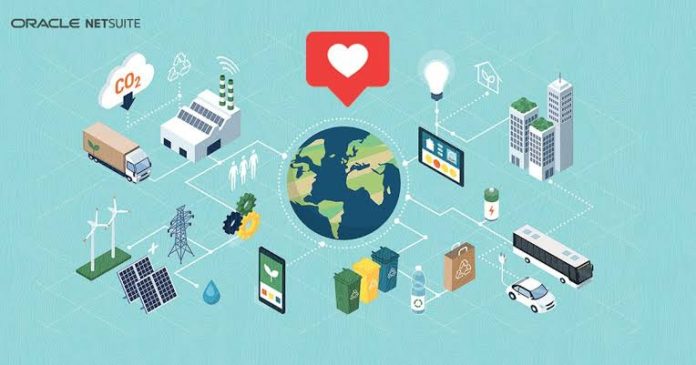Sustainability is now one of the most important issues for businesses in many fields. As people become more aware of environmental problems, social responsibility, and moral concerns, supply chain sustainability has become an important area for businesses that want to lower costs, lower risks, and improve their image. Smart procurement, which means getting things and services in a planned way, is a key part of meeting supply chain environmental goals. This article delves into the strategies businesses can employ to foster sustainability through smart procurement practices.
Understanding Supply Chain Sustainability
When environmental, social, and economic factors are considered to control supply chain processes, this is called supply chain sustainability. It encompasses efforts to minimize negative environmental impacts, promote fair labor practices, uphold ethical standards, and create long-term economic value. Achieving sustainability involves optimizing resource utilization, reducing waste, enhancing transparency, and fostering collaboration among supply chain partners.
Raiven, the leading group purchasing program and procurement software platform for contractors and enterprises, enables businesses to achieve supply chain sustainability through its innovative cloud-based procurement platform, which utilizes patent-pending AI algorithms to find in-stock products at the lowest prices, facilitating smarter and more efficient purchasing practices.
Smart Procurement: A Catalyst For Sustainability
Smart procurement goes beyond traditional purchasing practices by emphasizing strategic decision-making, collaboration, and innovation throughout the procurement process. It involves selecting suppliers based not only on cost and quality but also on their sustainability performance and alignment with corporate values. By integrating sustainability criteria into procurement decisions, organizations can drive positive change across their supply chains while mitigating risks and enhancing resilience.
Key Strategies For Supply Chain Sustainability Through Smart Procurement
Supplier Collaboration And Engagement: Establishing collaborative relationships with suppliers is essential for driving sustainability improvements. Organizations should engage suppliers early in the procurement process, communicate sustainability expectations clearly, and collaborate on initiatives such as product innovation, waste reduction, and carbon footprint reduction. Businesses can find ways to improve and co-create long-lasting answers by working closely with their providers.
Sustainable Sourcing Practices: Adopting sustainable sourcing practices involves selecting suppliers and materials that meet specific environmental and social criteria. This includes assessing suppliers’ sustainability performance, conducting audits, and evaluating certifications such as Fair Trade, Organic, or Forest Stewardship Council (FSC). Organizations can also prioritize local sourcing to reduce transportation emissions and support local economies.
Lifecycle Assessment And Circular Procurement: Lifecycle assessments (LCAs) let companies figure out how goods affect the environment at all stages of their lives, from getting the raw materials to throwing them away or reusing them at the end of their useful lives. By considering these impacts during procurement decisions, businesses can prioritize products with lower environmental footprints and promote circularity by favoring materials that are recyclable, biodegradable, or sourced from renewable resources.
Ethical And Social Responsibility: Ensuring ethical and socially responsible practices within the supply chain is paramount. Organizations should conduct due diligence to prevent labor exploitation, human rights violations, and unethical behaviors among suppliers. This includes implementing codes of conduct, conducting social audits, and training suppliers on labor standards and human rights principles.
Technology And Data Analytics: Leveraging technology and data analytics can enhance procurement processes and facilitate sustainability initiatives. By implementing supply chain visibility tools, organizations can track suppliers’ environmental and social performance, monitor compliance with sustainability standards, and identify areas for improvement. Additionally, advanced analytics can help optimize sourcing decisions, identify cost-saving opportunities, and predict supply chain risks.
Risk Management And Resilience: Integrating sustainability considerations into risk management practices is essential for building resilience in the supply chain. Organizations should assess their suppliers’ environmental, social, and regulatory risks and develop contingency plans to mitigate potential disruptions. This includes diversifying supplier networks, mapping supply chain dependencies, and investing in alternative sourcing options.
Continuous Improvement And Innovation: Embracing a continuous improvement and innovation culture is crucial for driving ongoing sustainability gains in the supply chain. Organizations should encourage feedback from suppliers, employees, and stakeholders and regularly evaluate the effectiveness of sustainability initiatives. Businesses can find new ways to be more efficient, reduce waste, and improve sustainability by encouraging a culture of innovation.
Conclusion
Achieving supply chain sustainability requires a multifaceted approach encompassing strategic procurement practices, supplier collaboration, ethical considerations, and technological innovation. By integrating sustainability into procurement decisions, organizations can drive positive social and environmental impacts while creating long-term value for their businesses. Businesses can reduce risks, make themselves more resilient, and help make the future better for people and the world by using smart buying strategies. Businesses can make the global supply chain environment more sustainable and adaptable by working together and improving.








